The grand feast
You may not question your annual ham and turkey dinner, but did you realise today’s Irish Christmas food traditions are a result of centuries of gradual changes in tastes and trends?
I always thought it strange to eat both ham and turkey in one sitting. Regina Sexton is a culinary historian and programme manager of the postgraduate diploma in Irish food culture, University College Cork (UCC). She says, actually, we’ve toned it down over the years to just two types of meat at the Christmas table.
As the biggest feast day in the Christian world, the most important aspects of Christmas feasting always included expensive and rare items – and, historically, meat qualified as both.
“[In the past], people aspired to having a variety of meats for Christmas dinner,” Regina says. “This could be turkey or goose. Fresh beef was the most traditional food for the Christmas season, but there were also hams, tongues or boar’s heads.
“Turkey still fits into the concept of ostentatious display,” she continues. “When you think of how the turkey is presented: there is ritual and ceremony; having somebody walk in with it and carve it tableside. Those are from those elite food traditions of the past.”

Regina Sexton.
Although it is now traditional to have a turkey for Christmas dinner, turkeys are not native to Ireland and didn’t make their way here until the 16th century. Ham, on the other hand, has been a traditional Christmas food for generations.
“Christmas Eve was traditionally a fasting day,” Regina says. “The traditional meal on Christmas Eve was salt fish cooked with potatoes and white sauce. After 12am, many people would take a slice of the Christmas ham before they went to bed and there was great relish and appreciation for that slice of ham; it’s quite special.”
Galway-based chef, author and academic JP McMahon says food traditions can be steeped in the intention of the holiday, while still featuring new flavours and concepts.
“This year will be different with smaller groups eating together,” he says. “Breaking down the legs of the turkey and butterflying the breast can be a solution to feeding smaller numbers. Ham hocks are great, too, they’re inexpensive and so flavourful.
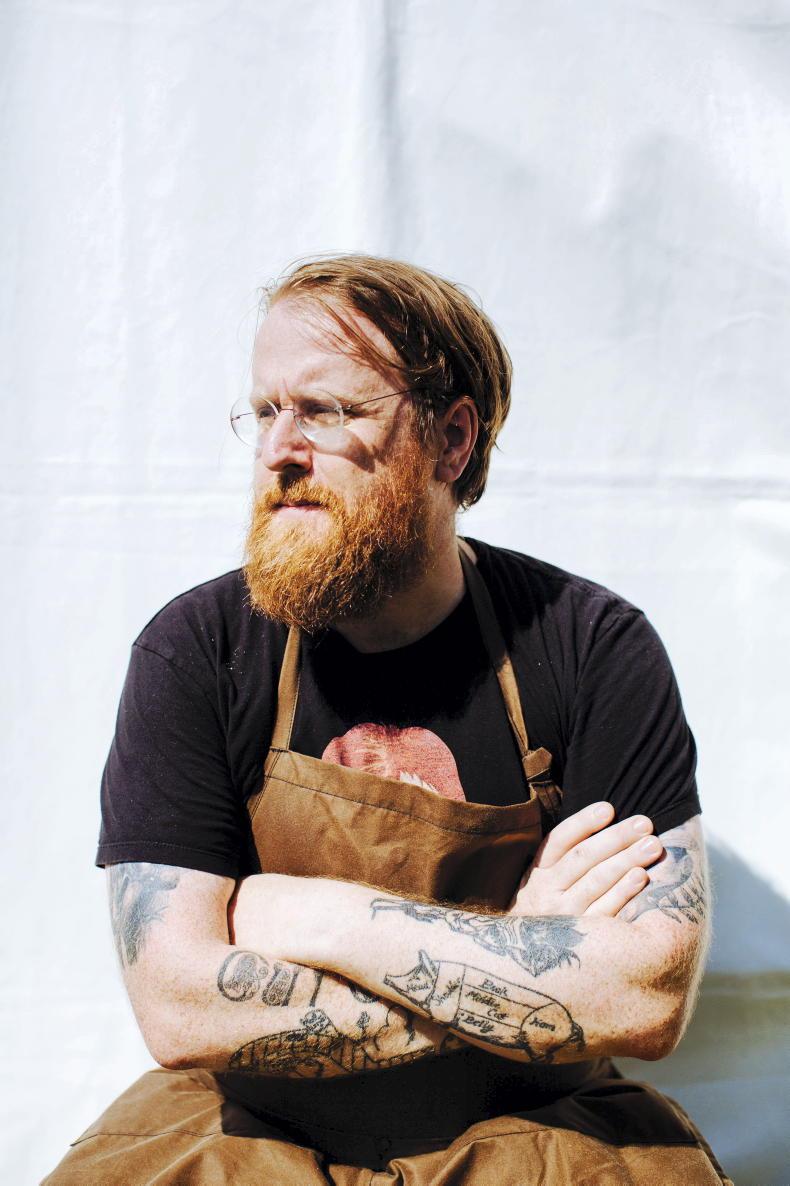
JP McMahon.
“For the last three to four years, we’ve been doing an Irish seafood Christmas in Tartare (restaurant) to try and establish a new tradition,” he continues. “This is a time of year when seafood and shellfish are really good. We have great producers but we’re not a great seafood-eating nation. We want to encourage people to have seafood on Christmas Eve – like in mainland Europe – breaking into some new traditions while keeping our other ones.”
Sweet nostalgia
What is it about mince pies, plum puddings and Christmas cake? You hear people say they don’t like them, but you’d be hard pressed to find a house in Ireland without at least one of these food traditions. Regina says these desserts exist because, way back in our history, people needed a little taste of luxury over the holiday season.
“Not only are they desserts, they’re socioeconomic history on a plate,” she laughs. “If you look at these [desserts], they’re cooked differently but their ingredients are similar: fruit, sugar, spice, alcohol and [historically] meat.
“These were symbolic of the food patterns of the very wealthy in society. They’re expensive, jazzy and display the wealth of the consumer, so you would want these things at Christmas time. The tradition was to eat a mince pie for each of the 12 days of Christmas.”
JP believes keeping to these dessert traditions reminds us of slower, more intentional ways of eating; even if they’re not as popular today.
“When we were younger, people would make [Christmas cake] and we would eat the marzipan and icing off the top and leave the rest,” he laughs. “The way they’re made in November and then maintained; carefully pouring brandy over them each week – it’s a nice tradition and it’s very different to how we eat now. There’s few things we make over time, anymore.”
Squirreling away
Coming from Canada, I tried to organise a cookie party with newly made friends for my first Irish Christmas. “What’s a cookie party?” each friend asked, one by one.
I realised, then, the tradition of baking and decorating Christmas cookies wasn’t as prevalent here. However, at Christmas time shops are full of beautiful tins of biscuits, and I have always wondered about their popularity.
“A big element of my Christmases, growing up would be my mother squirreling away things weeks before Christmas, and many of those things would be boxes of chocolates and biscuits,” Regina reminisces.
“The idea of boxes of biscuits, I think, goes back to the 19th century. The commercial activity of making them in factories and then the marketing, advertising and promotion that went with that. They put them in lovely, fancy containers; they’re eye catching and appealing which made people want them.
“In the 19th century, marketing Christmas intrigued people and the tins of biscuits are part of that development,” she continues. “It also fits into the element of an aspiration to extend charity to those who would be less well-off. The tins fill that desire as well, to extend good will in the form of a gift.”
JP agrees that the element of gifting has helped make tinned biscuits a major part of the season.
“The key thing of giving each other boxes of biscuits and all the different colours; I don’t think it’s as prominent now as it was,” he says.
“For me, Christmas is a celebration of indulgence, the ‘saving up’ of foods is a big part of that. Particularly because Ireland has so many times where you’re not eating (like Lent); Christmas was this time where it was a free-for-all.”
The Christmas morning fry-up
To many, Christmas breakfast is almost as important as the turkey and ham dinner. When you consider how early most people wake up on Christmas morning (particularly if young children are involved) it’s easy to see how welcome a hot, hearty fry up can be after late nights wrapping gifts and assembling toys.
Jack and Eddie’s sausages
Ed O’Malley founded his food business Jack and Eddie’s with his brother, Jack, 10 years ago when the economy was still suffering from the recession. They started producing sausages and bacon from their own pigs (as they’ve grown they now use 100% Irish pork in their products) and initially planned to just sell locally, but a chance entry into the Blas na hÉireann awards in 2014 showed the nation might enjoy their sausages, which won gold that year, and their rashers and puddings as much as their home county of Mayo.
“My background is pig farming,” Ed says. “My brothers and I wanted to add value to what we were doing.
“We used to make our own rashers and sausages at home so we wanted to see how that would work out. In the last four to five years we’ve really grown. We’re selling almost nation-wide today. We couldn’t believe it when we got to the finals and then we won gold for our sausages!”
Nigella’s favourite pudding
We all knew Inch House Black Pudding was delicious, but did you know the domestic goddess herself, Nigella Lawson, claims their puddings are her favourite? For Máirín Byrne, who owns and operates the small business, it’s all about sticking to the family recipe.
“It’s my grandmother’s recipe,” she explains. “They would have killed one or two pigs a year, back then, and any time a pig was killed, she’d make the pudding. They couldn’t do it in summer because blood turns quickly in the warmer weather and they had no fridges. Originally, it was all housewives [making blood pudding]; the monks would have brought the tradition from mainland and southern Europe.”
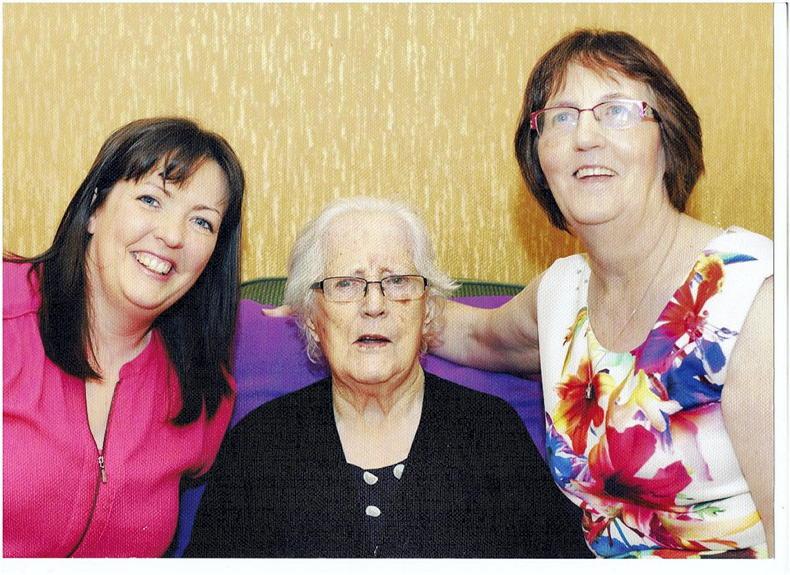
Inch House Pudding.
“My granny never liked to use the intestine to shape the pudding; she shaped it and baked or steamed it over a fire. That’s why we use the square shape. There’s very little fat and it’s mildly spiced; it lets the oats and the blood do the work with the flavour. I’m never going to be mainstream where I’m in every single market; we decided a long time ago we’re going to do it our way!
“In my house we usually have a big fry up – puddings, sausages, rashers - and we have it early on in the day,” she continues. “The only other time we’ll be sitting down to eat would be for Christmas dinner!”
The grand feast
You may not question your annual ham and turkey dinner, but did you realise today’s Irish Christmas food traditions are a result of centuries of gradual changes in tastes and trends?
I always thought it strange to eat both ham and turkey in one sitting. Regina Sexton is a culinary historian and programme manager of the postgraduate diploma in Irish food culture, University College Cork (UCC). She says, actually, we’ve toned it down over the years to just two types of meat at the Christmas table.
As the biggest feast day in the Christian world, the most important aspects of Christmas feasting always included expensive and rare items – and, historically, meat qualified as both.
“[In the past], people aspired to having a variety of meats for Christmas dinner,” Regina says. “This could be turkey or goose. Fresh beef was the most traditional food for the Christmas season, but there were also hams, tongues or boar’s heads.
“Turkey still fits into the concept of ostentatious display,” she continues. “When you think of how the turkey is presented: there is ritual and ceremony; having somebody walk in with it and carve it tableside. Those are from those elite food traditions of the past.”

Regina Sexton.
Although it is now traditional to have a turkey for Christmas dinner, turkeys are not native to Ireland and didn’t make their way here until the 16th century. Ham, on the other hand, has been a traditional Christmas food for generations.
“Christmas Eve was traditionally a fasting day,” Regina says. “The traditional meal on Christmas Eve was salt fish cooked with potatoes and white sauce. After 12am, many people would take a slice of the Christmas ham before they went to bed and there was great relish and appreciation for that slice of ham; it’s quite special.”
Galway-based chef, author and academic JP McMahon says food traditions can be steeped in the intention of the holiday, while still featuring new flavours and concepts.
“This year will be different with smaller groups eating together,” he says. “Breaking down the legs of the turkey and butterflying the breast can be a solution to feeding smaller numbers. Ham hocks are great, too, they’re inexpensive and so flavourful.

JP McMahon.
“For the last three to four years, we’ve been doing an Irish seafood Christmas in Tartare (restaurant) to try and establish a new tradition,” he continues. “This is a time of year when seafood and shellfish are really good. We have great producers but we’re not a great seafood-eating nation. We want to encourage people to have seafood on Christmas Eve – like in mainland Europe – breaking into some new traditions while keeping our other ones.”
Sweet nostalgia
What is it about mince pies, plum puddings and Christmas cake? You hear people say they don’t like them, but you’d be hard pressed to find a house in Ireland without at least one of these food traditions. Regina says these desserts exist because, way back in our history, people needed a little taste of luxury over the holiday season.
“Not only are they desserts, they’re socioeconomic history on a plate,” she laughs. “If you look at these [desserts], they’re cooked differently but their ingredients are similar: fruit, sugar, spice, alcohol and [historically] meat.
“These were symbolic of the food patterns of the very wealthy in society. They’re expensive, jazzy and display the wealth of the consumer, so you would want these things at Christmas time. The tradition was to eat a mince pie for each of the 12 days of Christmas.”
JP believes keeping to these dessert traditions reminds us of slower, more intentional ways of eating; even if they’re not as popular today.
“When we were younger, people would make [Christmas cake] and we would eat the marzipan and icing off the top and leave the rest,” he laughs. “The way they’re made in November and then maintained; carefully pouring brandy over them each week – it’s a nice tradition and it’s very different to how we eat now. There’s few things we make over time, anymore.”
Squirreling away
Coming from Canada, I tried to organise a cookie party with newly made friends for my first Irish Christmas. “What’s a cookie party?” each friend asked, one by one.
I realised, then, the tradition of baking and decorating Christmas cookies wasn’t as prevalent here. However, at Christmas time shops are full of beautiful tins of biscuits, and I have always wondered about their popularity.
“A big element of my Christmases, growing up would be my mother squirreling away things weeks before Christmas, and many of those things would be boxes of chocolates and biscuits,” Regina reminisces.
“The idea of boxes of biscuits, I think, goes back to the 19th century. The commercial activity of making them in factories and then the marketing, advertising and promotion that went with that. They put them in lovely, fancy containers; they’re eye catching and appealing which made people want them.
“In the 19th century, marketing Christmas intrigued people and the tins of biscuits are part of that development,” she continues. “It also fits into the element of an aspiration to extend charity to those who would be less well-off. The tins fill that desire as well, to extend good will in the form of a gift.”
JP agrees that the element of gifting has helped make tinned biscuits a major part of the season.
“The key thing of giving each other boxes of biscuits and all the different colours; I don’t think it’s as prominent now as it was,” he says.
“For me, Christmas is a celebration of indulgence, the ‘saving up’ of foods is a big part of that. Particularly because Ireland has so many times where you’re not eating (like Lent); Christmas was this time where it was a free-for-all.”
The Christmas morning fry-up
To many, Christmas breakfast is almost as important as the turkey and ham dinner. When you consider how early most people wake up on Christmas morning (particularly if young children are involved) it’s easy to see how welcome a hot, hearty fry up can be after late nights wrapping gifts and assembling toys.
Jack and Eddie’s sausages
Ed O’Malley founded his food business Jack and Eddie’s with his brother, Jack, 10 years ago when the economy was still suffering from the recession. They started producing sausages and bacon from their own pigs (as they’ve grown they now use 100% Irish pork in their products) and initially planned to just sell locally, but a chance entry into the Blas na hÉireann awards in 2014 showed the nation might enjoy their sausages, which won gold that year, and their rashers and puddings as much as their home county of Mayo.
“My background is pig farming,” Ed says. “My brothers and I wanted to add value to what we were doing.
“We used to make our own rashers and sausages at home so we wanted to see how that would work out. In the last four to five years we’ve really grown. We’re selling almost nation-wide today. We couldn’t believe it when we got to the finals and then we won gold for our sausages!”
Nigella’s favourite pudding
We all knew Inch House Black Pudding was delicious, but did you know the domestic goddess herself, Nigella Lawson, claims their puddings are her favourite? For Máirín Byrne, who owns and operates the small business, it’s all about sticking to the family recipe.
“It’s my grandmother’s recipe,” she explains. “They would have killed one or two pigs a year, back then, and any time a pig was killed, she’d make the pudding. They couldn’t do it in summer because blood turns quickly in the warmer weather and they had no fridges. Originally, it was all housewives [making blood pudding]; the monks would have brought the tradition from mainland and southern Europe.”

Inch House Pudding.
“My granny never liked to use the intestine to shape the pudding; she shaped it and baked or steamed it over a fire. That’s why we use the square shape. There’s very little fat and it’s mildly spiced; it lets the oats and the blood do the work with the flavour. I’m never going to be mainstream where I’m in every single market; we decided a long time ago we’re going to do it our way!
“In my house we usually have a big fry up – puddings, sausages, rashers - and we have it early on in the day,” she continues. “The only other time we’ll be sitting down to eat would be for Christmas dinner!”








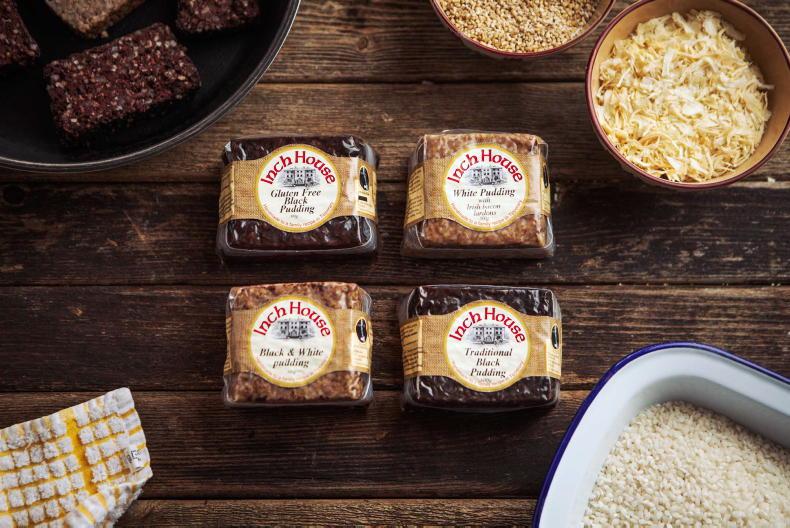
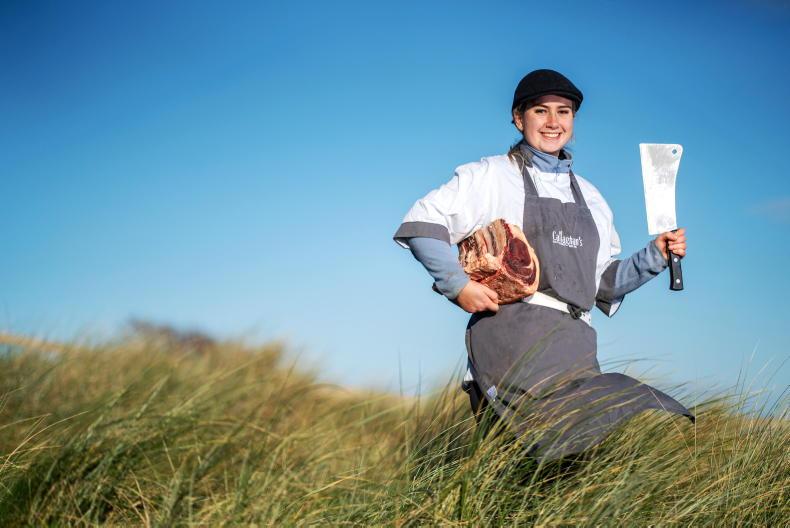
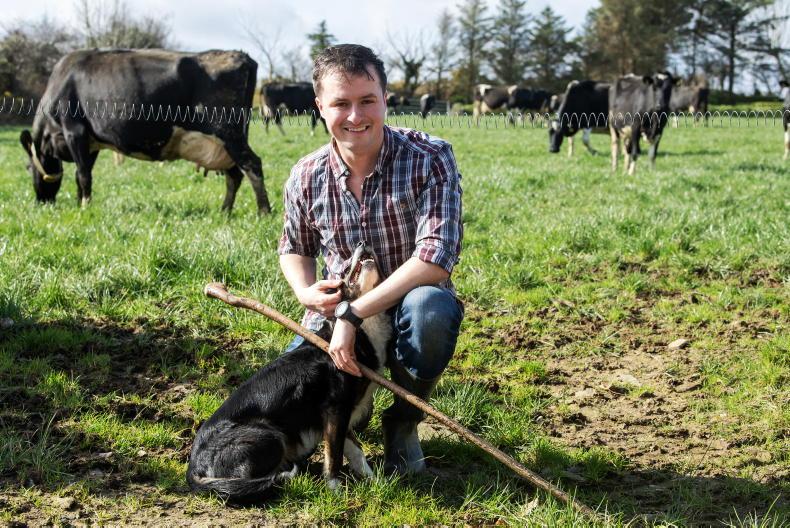
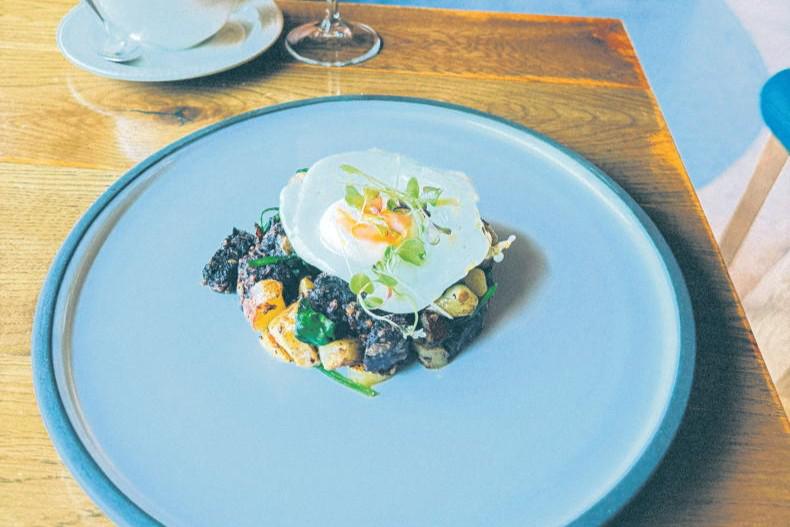
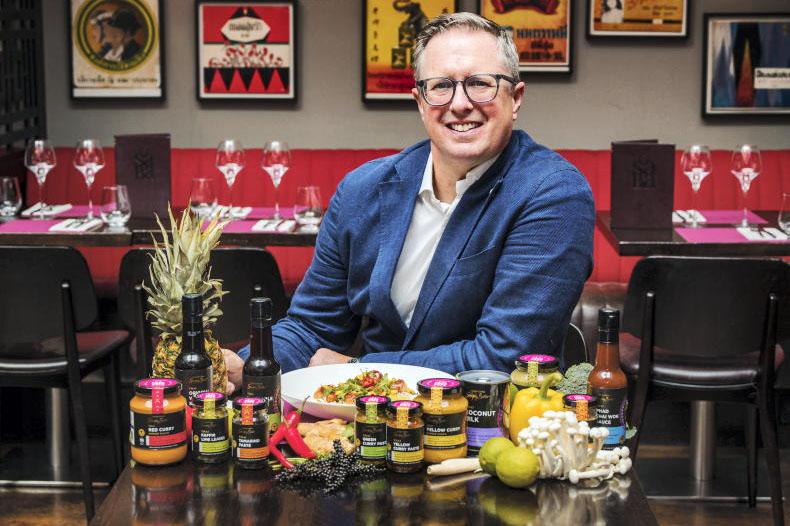
SHARING OPTIONS